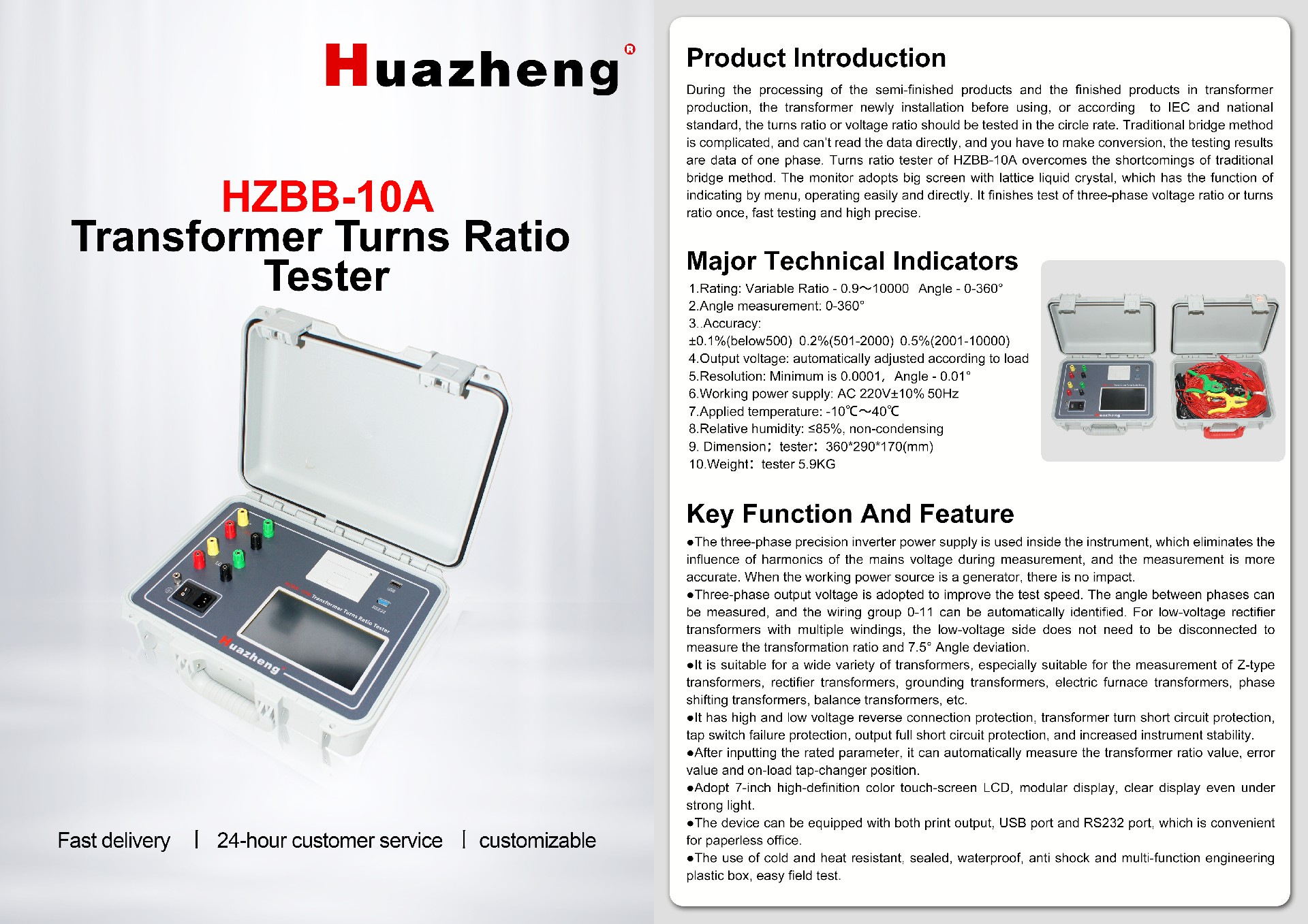Time: 2024-12-23 Author: 铧正 Click: 1287 Time

A turns ratio tester is an essential instrument used in the electrical engineering field, particularly for testing transformers. Its primary function is to measure the turns ratio of a transformer, which is the ratio of the number of turns in the primary winding to the number of turns in the secondary winding. Understanding the working principle of a turns ratio tester is crucial for ensuring the proper functioning and efficiency of transformers.
The working principle of a turns ratio tester is based on the relationship between voltage and turns in a transformer. When an alternating current (AC) voltage is applied to the primary winding, it induces a voltage in the secondary winding. The turns ratio can be calculated by measuring the input voltage (primary) and the output voltage (secondary). The formula used is:
[ \text{Turns Ratio} = \frac{\text{Primary Voltage}}{\text{Secondary Voltage}} ]
To perform the test, the turns ratio tester generates a low-voltage AC signal that is applied to the primary winding of the transformer. The tester then measures the resulting voltage in the secondary winding. The device is equipped with precise measurement tools that ensure accurate readings, which are crucial for diagnosing transformer performance.
In addition to measuring the turns ratio, modern turns ratio testers often come with advanced features such as automatic calculations, data logging, and the ability to perform tests on various transformer types, including three-phase transformers. This versatility makes them invaluable for maintenance and troubleshooting in electrical systems.
In summary, the turns ratio tester operates on the principle of voltage induction in transformers, allowing engineers to assess the integrity and performance of transformers effectively. Regular testing with a turns ratio tester helps in identifying potential issues, ensuring reliability and safety in electrical systems.